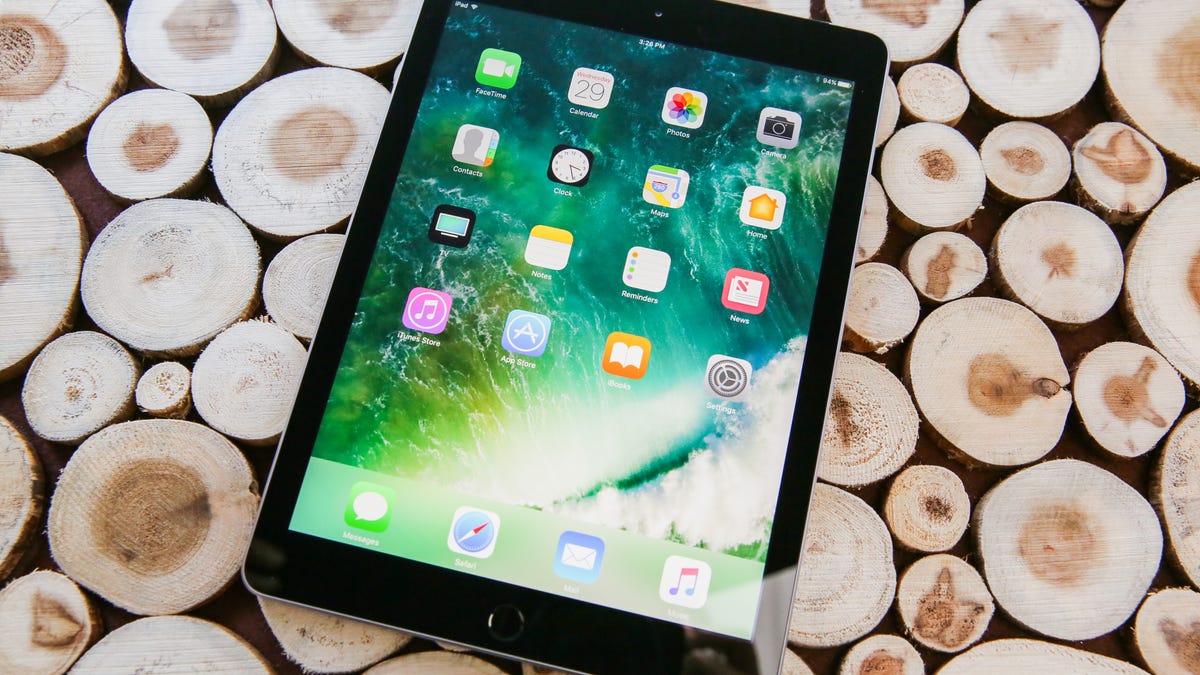Apple wants to make iPads cheaper. Here’s how that might happen
Commentary: To appeal to students and teachers, the next iPad needs to offer a compelling case against Chromebooks.

The minute Apple announced an education-focused event in Chicago for March 27, the betting on new hardware announcements focused on refreshed iPads . Now, Bloomberg's Mark Gurman is reporting the company "plans to show off a new version of its cheapest iPad that should appeal to the education market."
While once considered a potential powerhouse for education, the iPad has been overshadowed by cheaper, more flexible Chromebooks that run Google's Chrome OS . Chrome OS systems currently own about 60 percent of the K-12 education market, versus 17 percent for Apple.
Lowering the entry price for iPads could help win some of that market share, and Apple is already moving in this direction. Last year's iPad price cut -- where the 2017 iPad at $329 replaced the iPad Air 2 at $499 -- was the prime driver that finally reversed a 13-quarter trend of iPad sales declines, even as higher-end iPad Pro models deliver better screens, sleeker design and support for the Apple Pencil stylus at considerably higher prices.
So, an even cheaper iPad would certainly goose sales both inside and outside the classroom. But how does Apple lower the price without sacrificing its profit margins, which have propelled the company to its current status as the world's most valuable corporation?
Taking an expansive view of the possibilities, these are a few ways the company could hypothetically offer a less-expensive education iPad:
Make it feel more like a Chromebook
If you're competing with cloud-based devices, then act more like a cloud-based device. Local storage for the basic iPad starts at 32GB and goes up to 128GB. Many Chromebooks get away with just 16GB of local built-in storage (and flash memory for these devices isn't cheap).
Especially for schools, many software functions could be moved to remote cloud-based servers, which would also make it easier to lock devices down and make sure they're used primarily for schoolwork, not for playing games or posting on social media.
To really strip it down, even more features could be scaled back. Drop the headphone jack, or one of the cameras. And that provides an incentive to trade up to a better-equipped mainstream iPad later on.
Make the difference up with accessories and services
Sell the basic hardware for less, and make up for it by convincing students and teachers to invest in accessories like keyboards, cases, extra chargers and extra-cost software upgrades or subscription services.
The optional iPad Pro keyboard.
For example, the Microsoft Surface Pro starts at $599, but practically requires its sold-separately clip-on keyboard, which adds another $129 to the price. The dedicated keyboard cover for the iPad Pro likewise is a must-have $159 accessory. According to Gurman, a version of that -- and maybe even the Pro's Pencil stylus -- could come to the low-cost iPad, too.
Now that the iPad Pros are getting redesigned and Face ID (later this year), it’d make sense to bring over previous differentiators like Apple Pencil and Smart Keyboard support to the cheaper model. Especially for education environments. https://t.co/0s5FwqRWUg
— Mark Gurman (@markgurman) March 23, 2018
In fact, it looks possible that the Apple Pencil accessory, previously restricted to the iPad Pro, will be coming to this new, lower-cost 9.7-inch iPad. MacRumors quotes KGI Securities analyst Ming-Chi Kuo as saying, "The new low-price 9.7-inch iPad...will likely support Apple Pencil."
Take the profit hit, but make up for it in volume
The 2017 iPad was often sold for as low as $249, especially during the all-important holiday shopping season. And, it was already engineered to wring some cost advantages from the design, adding thickness and weight back into the body. The mechanical lock switch was removed, and the display lost a laminated coating.
The point being that the costs for producing that product have already come down, and it can apparently be sold at $250 during big sales without hurting anyone. Sell it -- even at a loss -- to schools and students and you accomplish something very important -- turning young users into long-term Apple customers.
Start with an iPad, even a subsidized one, in grade school, and by the time you're in high school or college, you've traded up to a MacBook that can easily cost four times as much. Hook 'em young, and you've got brand loyalty any company would kill for.
See also
CNET will be live in Chicago to bring you all of the news, reviews, photos and video from Apple's March 27 event. You can tune into our live blog here. The keynote starts at 8 a.m. PT.

